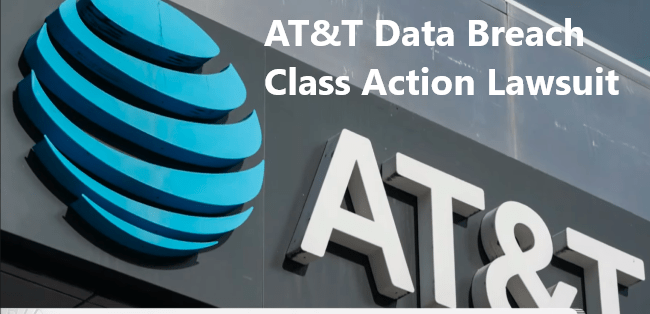ATT Data Breach Class Action Lawsuit: Empowering Victims with Vital Information and Support
Unveiling the Details and Next Steps for Affected Customers

In 2024, a significant data breach rocked AT&T, affecting millions of current and former customers. This article provides an in-depth look at the ATT data breach class action lawsuit, highlighting the key details, steps for affected individuals, and crucial measures to protect your personal information. Our goal is to equip you with the knowledge to navigate this situation effectively and ensure your data’s security moving forward.
Understanding the AT&T Data Breach
What Happened?
In March 2024, AT&T discovered that a dataset containing the personal information of approximately 73 million customers had been leaked on the dark web. The compromised data included full names, Social Security numbers, email addresses, phone numbers, and dates of birth, primarily from accounts dating back to 2019 or earlier.
Scope and Impact
The breach impacted both current and former AT&T customers. The company has confirmed that the data exposure did not include personal financial information or call history. However, the sensitivity of the leaked information poses significant risks for identity theft and fraud.
The Class Action Lawsuit
Filing and Allegations
Numerous class-action lawsuits have been filed against AT&T, accusing the telecommunications giant of negligence and failure to implement adequate cybersecurity measures. Plaintiffs argue that AT&T’s delay in investigating and disclosing the breach exacerbated the potential harm to customers.
Key Lawsuit Claims
- Negligence: AT&T allegedly failed to protect customer data by not implementing robust cybersecurity protocols.
- Breach of Contract: The company is accused of not upholding its commitment to safeguard customer information.
- Delayed Response: Lawsuits claim that AT&T knew about the breach as early as 2021 but did not take appropriate action until 2024.
What AT&T is Doing to Mitigate the Breach
Notifications and Credit Monitoring
AT&T has begun notifying affected customers through emails and letters. The company is offering one year of complimentary credit monitoring and identity theft protection services to help mitigate potential damage.
Security Enhancements
In response to the breach, AT&T has reset customer passcodes and enhanced its security measures. The company is working with internal and external cybersecurity experts to investigate the breach and prevent future incidents.
Steps for Affected Customers
Confirm Your Involvement
If you have received a notification from AT&T, it is crucial to confirm your involvement in the breach. Follow the instructions provided in the notification to enroll in the complimentary credit monitoring services.
Monitor Your Accounts
Stay vigilant by regularly monitoring your financial accounts and credit reports for any suspicious activity. Set up fraud alerts with major credit bureaus to receive notifications of any unusual transactions.
Update Security Information
Change your AT&T account password and passcode immediately. Consider updating passwords for other accounts that may have used similar credentials.
Legal Rights and Options
Joining the Class Action Lawsuit
Affected customers have the option to join the class-action lawsuits against AT&T. Participating in these lawsuits can provide an opportunity to seek compensation for any damages suffered due to the breach.
Seeking Individual Arbitration
In addition to the class-action lawsuits, some law firms are representing AT&T data breach victims in individual arbitrations. This approach may offer a more personalized resolution to your claims.
Preventive Measures for Future Protection
Strengthening Personal Cybersecurity
- Use Strong, Unique Passwords: Avoid using the same password across multiple accounts. Utilize a combination of letters, numbers, and special characters.
- Enable Two-Factor Authentication: Add an extra layer of security to your accounts by enabling two-factor authentication (2FA).
- Regularly Update Software: Keep your devices and applications up to date to protect against known vulnerabilities.
Staying Informed
Stay informed about the latest cybersecurity threats and best practices. Subscribe to trusted cybersecurity blogs and news sources to receive updates on new threats and protective measures.
Conclusion
The ATT data breach class action lawsuit highlights the importance of robust cybersecurity measures and the need for prompt action when breaches occur. By understanding your rights and taking proactive steps to protect your personal information, you can mitigate the potential impact of such incidents. Stay vigilant, stay informed, and take advantage of the resources available to safeguard your data.
FAQs
What information was compromised in the AT&T data breach?
The compromised data included full names, Social Security numbers, email addresses, phone numbers, and dates of birth of approximately 73 million customers.
How can I know if I am affected by the breach?
AT&T has started notifying affected customers through emails and letters. If you receive a notification, follow the provided instructions to confirm your involvement and enroll in complimentary credit monitoring services.
What should I do if I am affected?
Monitor your accounts for suspicious activity, update your AT&T account credentials, and consider joining the class action lawsuit or seeking individual arbitration for compensation.
How is AT&T responding to the breach?
AT&T has reset customer passcodes and enhanced security measures, and it offers one year of complimentary credit monitoring and identity theft protection services.
How can I protect my information in the future?
Use strong, unique passwords, enable two-factor authentication, keep your software updated, and stay informed about cybersecurity best practices.
By following these guidelines and staying proactive, you can better protect your personal information and navigate the aftermath of the AT&T data breach.



